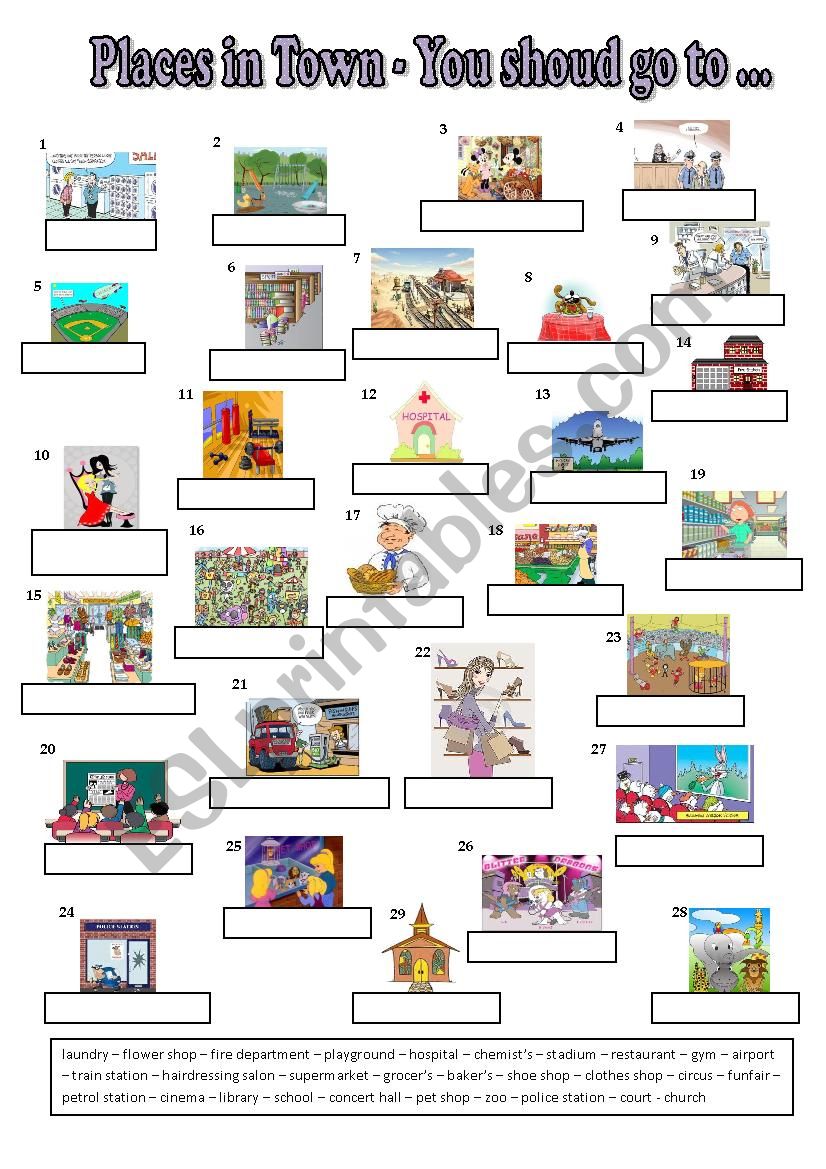¿Cómo describir el mundo que nos rodea. MY WORLD?
Comenzamos:
Usamos THERE IS para describir existencia SINGULAR de las cosas y THERE ARE para describir la existencia PLURAL de las cosas.
USE A DICTIONARY TO TRANSLATE THE FOLLOWING SENTENCES
There is a store round the corner.
There are two houses near the station.
There are three schools in this town.
There is a square in the city center.
There are many people at the restaurant.
Para describir nuestro ambiente y la posición y lugares de las cosas debemos aprender algunas palabras especiales llamadas “preposiciones”, que indican DÓNDE se encuentran.
BUSCA EL SIGNIFICADO DE TODOS LOS NEGOCIOS.
Example: Bakery: panadería
Cleaners
USE THERE IS/ THERE ARE y la preposición que corresponda para describir este plano de la ciudad.
Example: There is a restaurant between the hotel and the train station.
………………………………………………………………………………………………………………………………………………………………………………………………………………………………………………………………………………………………………………………………………………………………………
………………………………………………………………………………………………………………………………………………………………………………………………………………………………………………
…………
OBSERVA EL MAPA Y. DESCRIBE LA CIUDAD DE MENDOZA A UN TURISTA.
……………………………………………………………………………………………………………
ANSWER THESE QUESTIONS
Where is there a Banco Nación?
Where is the nearest Mc Donald´s?
Where is there an ATM?
Where are there clothes´ stores?
Where is there a Carrefour supermarket?
LECTURA COMPRENSIVA
READ THE FOLLOWING PASSAGES. THEN COMPLETE THE CHART BELOW
COMPARA AMBOS TEXTOS Y LUEGO COMPLETA EL CUADRO
In your opinion, who is a GREEN PERSON? Caroline or Jonathan? WHY?
…………………………………………………………………………………………………………
………………………………………………………………………………………………………....
2- ARE YOU GREEN?
.................................................................................................................................................
..................................................................................................................................................
Dar y entender indicaciones correctas de cómo llegar a un lugar es muy importante para no perderte. Estas son algunas formas simples de indicar lugares en la cuidad.
Observa el vocabulario. Ayúdate con un diccionario.








